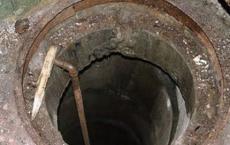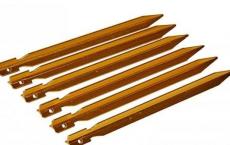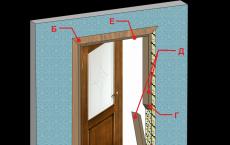Why do you need a water pressure regulator in the apartment?
We carefully select plumbing equipment to provide ourselves and our loved ones with maximum comfort from their use. Therefore, investing a lot of effort and expense in the installation of plumbing systems, we expect high-quality and reliable service, but banal surges in water pressure in pipes can spoil the operation of the most advanced devices. A water pressure reducer or regulator in the water supply system will help to effectively solve this problem.
Why do you need a water pressure regulator in the apartment?
This device performs a job comparable to the function of a voltage stabilizer. Just as this device protects household appliances from voltage surges in the electricity network, so the reducer stabilizes the pressure and pressure of the liquid in the pipeline. However, pressure gauge regulators also perform a number of other important functions.
The main task is to protect against increased fluid pressure in the water supply. Most of the plumbing fixtures used for domestic purposes are designed to work with pressures up to 3 atm. If the pressure is greater, then the plumbing system of the apartment is subjected to excessive loads. As a result, the service life of the valves of dishwashers and washing machines is reduced, the reliability of the connections is reduced and many other troubles appear.
The reducer, regulating the water pressure, also protects the water supply system from possible water hammer, when, due to malfunctions at the pumping station or through the fault of the water utility workers, there is a sharp jump in fluid pressure in the pipeline. The consequences of water hammer are very disappointing: from rupture of pipes, and not at the joints, to breakdown of household appliances that use water resources. Often, because of such a jump, an electric water heater simply breaks.

For the consumer, an important function is the saving of water resources. The ability to adjust the pressure allows you to apply ample opportunities to limit and reduce water consumption in the apartment. The usual decrease in pressure from 6 to 3 atm reduces the consumption of water resources by 20-25% for a family of 3-4 people. Each time, opening a water tap with a pressure regulator, the consumer consumes less water than without this device.
And if the apartment does not have mechanisms that require a certain minimum pressure (for example, an instantaneous water heater or a reverse osmosis system), then the pressure can be reduced to 1-2 bar with a pressure regulating device. Then the savings will be even greater - up to 35%, however, at the same time, the toilet bowl will fill up a little longer than usual.
Consumers who constantly “jump” the water pressure in risers with hot and cold liquid will most appreciate the advantages of such a gearbox. Due to the unstable pressure in the water supply system, each time it is necessary to stabilize the pressure with a mixer for a long time in order to obtain a comfortable temperature. As a result, a lot of water is wasted. The regulator balances the pressure in the pipeline.
Types of construction and the principle of their operation
According to the principle of operation, water pressure control devices are represented by several types of devices:
- piston type - the main plus is the simplicity of the device. Pressure adjustment occurs with the help of a small spring-loaded piston, which, with a decrease or increase in the diameter of the hole, equalizes the water pressure in the entire system.
The level of the output hydraulic pressure is stabilized due to compression or weakening of the spring device, which is determined by the rotation of the screw control element.
The main disadvantage during the operation of these devices is the need for preliminary water purification, due to the fact that the piston gearbox quickly becomes clogged and stops working. This point, many manufacturers take into account and complete their products with special filters. Adjustment is carried out at a pressure of one to five atmospheres.

- membrane type - the main difference from similar devices is a rather high indicator of reliability and unpretentiousness, in addition to them a wide range of throughput. The usual indicator of the working water flow rate is 0.5 - 3 m3 / h.
The principle of operation of this device is the functioning of a spring-loaded membrane, which is located in a separate sealed chamber. The level of compressive effect acting on the spring affects the small valve, which helps to increase or decrease the capacity of the water pressure reducer in the water supply. This type of device is quite reliable and efficient, and has practically no pronounced drawbacks.

- flow type - a distinctive feature of this design is the absolute absence of any moving parts, which has a good effect on such parameters as reliability and durability. Pressure stabilization is achieved due to the loss of the speed of the water mass through the internal labyrinth of the device.
At the outlet, the liquid is combined into one stream with a low speed of movement. In everyday life it is used in almost any irrigation systems. The disadvantage of this design is the need to install an additional regulator at the outlet.
How to install and adjust the device?
Installing the device is practically the same as installing a strainer or water meter. The direction of water is indicated by arrows on the body, the pressure gauge or its installation location must be located at the top. The reducer can be installed in front of the water meter, or you can choose a straight section of pipe for this purpose with easy access and the possibility of trouble-free adjustment.
- Turn off the water before starting work (do not forget to warn the neighbors about this in advance if you block the common riser).
- If necessary, install an inlet valve to which a mechanical filter will be connected.
- Install a ball valve on the high pressure hose.
- It is strongly not recommended to install a mechanical filter in front of the structure, as well as shut-off valves "before" and "after" the device.
Be sure to seal all joints and connections. In order to avoid “injuries” to the gearbox, it is recommended to seal it with sanitary flax (tow). This will help to avoid leaks when installed in the desired position.

Many regulators are made with a preset setting, they have a pressure of 3 bar. If desired, it can be made more if you use a compensator, or less. To do this, you will need a wide screwdriver or wrench, it all depends on the specific model. Some more expensive devices allow manual configuration without resorting to any tools:
- Check the reliability of the installation of the pressure regulator, make sure that there is water in the system and that all taps in the apartment are set to the closed position.
- Locate the adjusting knob at the bottom of the gearbox and start adjusting slowly.
- Turn counterclockwise to increase pressure, clockwise to decrease. One turn changes the pressure by about 0.5 bar, this can be immediately seen due to the movement of the pointer.
This is how the setup works. In order to carry out the adjustment, then screw the plug in its place, or adjust “by eye” following the jet from the mixer. Now you know how to regulate the pressure of water in the pipeline.
Installing a household water pressure regulator will get rid of several problems associated with high fluid pressure in the water supply. This will increase the life of expensive equipment, increase comfort and save resources. Easy installation and maintenance of the reducer allows you to use this desired device without recourse to third-party specialists.



